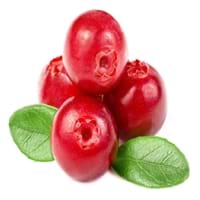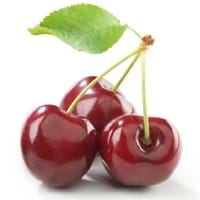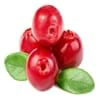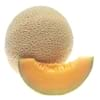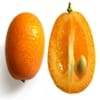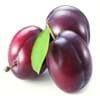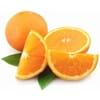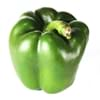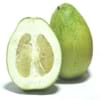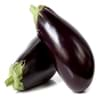Health Benefits
Cancer prevention, Heart care, Kidney stone treatment, Scurvy treatment, Ulcer prevention
Arthritis prevention, Cancer prevention, Gout treatment, Heart care, Muscle pain relief, Regulation of heart rate, Treatment of alzheimer's disease
General Benefits
Anti-inflammatory properties, Boosts immune system, Digestive aid, Fights against infections, Strengthens bones
Anti oxidant properties, Anti-inflammatory properties, Controls blood pressure, Cures headache, Sore throat treatment
Skin Benefits
Anti-aging benefits, Reduces wrinkles, Skin rejuvenation, Treatment of acne
Anti-aging benefits, Brightens and lightens complexion, Skin rejuvenation, Treatment of dark spots
Hair Benefits
Promotes longer and healthier hair, Protects hair, Treatment of dandruff
Acts as moisturizer, Protects hair, Regulates hair growth, Rejuvenates scalp
Allergy Symptoms
Anaphylaxis, Breathing difficulty, Itching, Skin rash, Swelling of mouth, tongue or lips
Anaphylaxis, Breathing difficulty, Fainting, Hives, Itching, Nasal congestion, Nausea, Swelling of mouth, tongue or lips, Tingling sensation in mouth, Vomiting, Wheezing
Side Effects
Allergic reaction, Diarrhoea, Nausea, Stomach pain, Vomiting
Abdominal cramps, Allergic reaction, Bloating, Intestinal gas
Best Time to Eat
Any time except an hour after meal, Don't consume at night and before bed
Best if taken as a breakfast (or empty stomach), As a snack in the late afternoon, Don't eat after meal, Morning time (before lunch)
Vitamin B5 (Pantothenic Acid)
Vitamin C (Ascorbic Acid)
Vitamin K (Phyllochinone)
Phytosterol
Not Available
Calories in Fresh Fruit with Peel
Calories in Fresh Fruit without Peel
Not Available
Not Available
Varieties
Early Black, Howes, Ben Lear and Stevens
Vandalay, Stella, Tehranivee, Sonata, Whitegold, Symphony, Blackgold, Sunburst, Lapins, Skeena and Sweetheart
Origin
North America
Europe, Western Asia
Soil Type
Clay, Sandy, Well-drained
Sandy
Climatic Conditions
Warm
Cold
Facts about
- Europeans thought the cranberry blossom looked like the head of a sandhill crane, hence the name Cranberry.
- They are also known as bounce berries as they bounce when they ripe.
- Cranberries do not grow in water.
- The word cherry is derived from the Turkish town of Cerasus.
- In Oliver, British Columbia, a pie of 39,683 pounds was baked which holds the record of biggest cherry pie.
- National cherry cheese cake day is on April 23.
Top Producer
United States of America
Turkey
Other Countries
Azerbaijan, Belarus, Bulgaria, Canada, Latvia, Macedonia, NA, Romania, Tunisia, Ukraine
Austria, Chile, China, France, Germany, Greece, Iran, Italy, Poland, Romania, Russia, Serbia, Spain, Syria, Ukraine, United States of America, Uzbekistan
Top Importer
Europe
Russia
Top Exporter
United States of America
Poland
Botanical Name
Vaccinium Macrocarpon
Prunus avium
Synonym
Oxycoccus macrocarpus
Not Available
Subkingdom
Tracheobionta
Tracheobionta
Division
Magnoliophyta
Magnoliophyta
Class
Magnoliopsida
Magnoliopsida
Subclass
Dillenhidae
Rosidae
Family
Ericaceae
Rosaceae
Species
Vaccinium macrocarpon
P. avium
Difference Between Cranberry and Sweet Cherry
We might think that Cranberry and Sweet Cherry are similar with respect to nutritional value and health benefits. But the nutrient content of both fruits is different. Cranberry and Sweet Cherry Facts such as their taste, shape, color, and size are also distinct. The difference between Cranberry and Sweet Cherry is explained here.
The amount of calories in 100 gm of fresh Cranberry and Sweet Cherry with peel is 46.00 kcal and 63.00 kcal and the amount of calories without peel is Not Available and Not Available respectively. Thus, Cranberry and Sweet Cherry belong to Low Calorie Fruits and Low Calorie Fruits category.These fruits might or might not differ with respect to their scientific classification. The order of Cranberry and Sweet Cherry is Ericales and Rosales respectively. Cranberry belongs to Ericaceae family and Sweet Cherry belongs to Rosaceae family. Cranberry belongs to Vaccinium genus of Vaccinium macrocarpon species and Sweet Cherry belongs to Prunus genus of P. avium species. Beings plants, both fruits belong to Plantae Kingdom.
